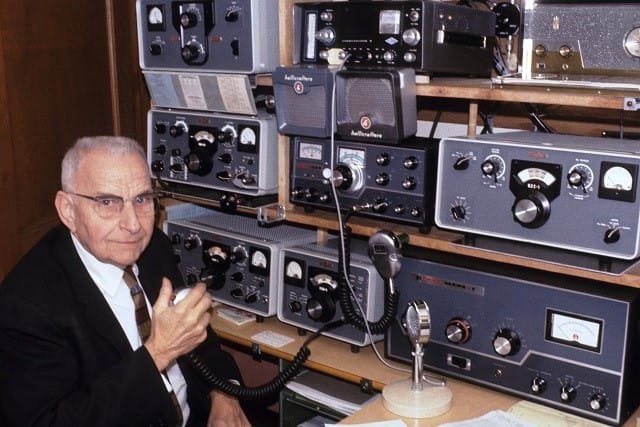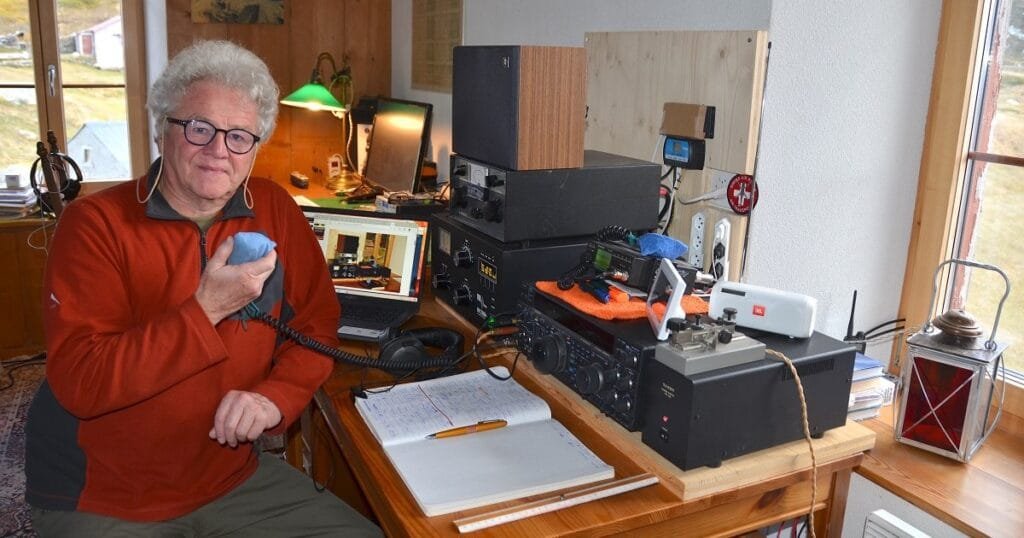Table of Contents
ToggleWhat is a Ham Call Sign? Understanding the History and Importance
Hey, TalkieTrail readers! If you’ve ever listened to a ham radio discussion, you’ve probably heard someone throw off a string of letters and numbers like “K2ABC” or “Whiskey Tango Foxtrot.” That, my friends, is a ham call sign—it’s more than simply a string of characters; it’s an essential component of the radio communication cosmos. A ham call sign, which is a signal that announces your existence and activities on the airways, is how you are uniquely identified on amateur radio.
I always start by using my call sign, especially on the first contact with a new operator. But not only is it better than nothing, but consider a cover letter as your way to show you can be professional and make an excellent first impression. Call signs, other than a flashy image opening for the ultimate reveal of your name, have actual history and utility. Today we´ll take a little dip into the world of ham call signs to see where they originated and why they truly are so important.
What is a Call Sign?
A call sign is in a way similar to how you would describe the name of a radio station, or operator as it pertains to communication within the wide world of radio signals. In other words, it is a personalized identification that marks one company different from another. Think of it as a “user name” for your radio, only more important. Every ham radio operator is known by their call sign, as are all pilots and marine communicators. It is how you are known, located and in some cases what media type it is that you’re interacting with.
Once you pass all necessary tests, a call sign will be assigned for your amateur radio license-your formal identity in the ham world. It is more than just a series of letters and numbers, it signifies the official entrance into amateur radio! Designed to promote operation under good amateur practices, ham call signs are controlled and issued by national agencies which follow specific forms according to international standards. For example, the United States uses prefixes like K, N and W… But other countries have their own set of specific radio call sign series that makes it easy to find from which entity a signal came.
Hint: Call Sign is not Calling Code. Ham calling codes are another thing entirely. learn more about ham calling codes here.
The History of Call Signs

Call signs, the heritage of which stretches far back into wireless communication history. It is only by seeing their roots that the continued necessity of these causes in current society becomes apparent.
Early Beginnings
With the invention of radio and wireless telegraphy in the middle of the 20th century, call signs were first used. Thus, it quickly became clear that a structure was required to avoid mayhem on the airways as radio technology advanced. There would be hundreds of yelling jokers on the air if all those stations broadcast without identifying themselves.
The International Radiotelegraph Convention established call signs in 1906, marking the beginning of radio communication standardization. This was a critical breakthrough for maintaining orderly and effective communication, especially as radio popularity and use grew across borders.
The Role of the ITU
This led to the establishment of the International Telecommunication Union (ITU) in 1932 as a global regulatory authority for telecommunication standards, which also allocated specific call signs. This system has been internationally-recognized as it was approved by the ITU to assign prefixes for different countries. This very method created the basis to how call signs are used today, such that if there was a message by radio one would receive it unchanged and their station could communicate over long distances.
For amateur radio operators, the ITU’s issue of prefixes signaled the start of a systematic approach to identification. Ham call signs were the primary means of distinguishing operators, ensuring that amateur radio communication remained clear and organized.
Call Signs in Military and Aviation

During WWII, when call signs were most vital to military and aviation communications. Different call signs were given to each of the military units, ships and aircraft in order to ensure safe and effective communication. To this day, these call signs have not changed and are still used in the industry to keep all airspace safe.
Commercial airlines, for example, use call sign prefixes like “UAL” for United and “DAL” for Delta to differentiate their planes/missions. This allows rapid detection, even in high-pressure environments and this is key to make sure both civil and military operations continue unimpeded.
Curious to learn the history behind this ground-breaking communication device – The walkie-talkie. Click here to learn more.
Modern Call Signs: Where We Are Today
Call signs have developed, but their core role remains the same. Whether you’re an amateur radio operator, a sea captain, or an astronaut on the International Space Station, call signs are critical tools for clear and successful communications.
Ham Radio Call Signs Today
In the realm of amateur radio, call signs are more than simply a legal obligation; they are a badge of distinction. You can quickly identify the identity and place of origin of a ham operator when you hear their call sign over the radio. This sense of identification and community is a large part of what makes amateur radio so unique.
Ham call signs also provide insight into an operator’s degree of experience. In certain countries, various licensing classes have different call sign formats, making it easy to identify experienced operators at a glance. This gives people in the amateur radio community a greater sense of authority and distinction, improving their standing and encouraging a higher degree of peer respect.
Advantages of Ham Call Signs
Why are ham call signs so important? Let us break it down:
Clear Identification

Ham call signs are a straightforward and unambiguous way to identify operators and stations. When you hear a call sign, you immediately know who’s on the other end—no guessing necessary. This is especially crucial when operating on congested frequencies, when rapid recognition is critical for preserving order.
Efficient Communication
In the fast-paced world of radio transmission, time is critical. Ham call signs make the procedure easier, allowing operators to instantly address one another and keep discussions going smoothly. Efficiency is critical while participating in a contest or organizing emergency response activities.
Regulatory Compliance
Ham call signs are useful for more than just showing off; they are essential for upholding correct communication procedures and regulatory compliance. Authorities employ them to monitor the radio airwaves and verify that operators follow license requirements and operate on the right frequencies. This helps to eliminate interference and keeps the amateur bands a safe and fun environment for everyone.
Community and Recognition

Your call sign becomes an integral part of your identification in the amateur radio community, signifying your reputation and presence on the air. It’s how you’re recognized by your fellow operators, and it develops a feeling of community. Many amateur radio operators take pleasure in their call signs, frequently modifying them with vanity choices that represent their recreational interests or successes.
Security and Safety
Call signals play a crucial role in maintaining security and guaranteeing safety in vital domains including aviation and marine communication. They limit the possibility of misinterpretation, which may be hazardous in these high-risk situations. A misheard call sign might lead to misunderstanding or even catastrophe, so precision is critical.
Challenges and Disadvantages of Call Signs
While call signs are necessary, they do not come without challenges:
Complexity for Newcomers
For those new to radio, the system of call signs might be bewildering. Initially, different formats, laws, and country codes might be difficult to understand. Learning how to navigate the world of call signs is part of the onboarding process for new operators, but it may be intimidating.
Potential for Misuse

Unfortunately, unauthorized operators can abuse call signs, posing security problems and interfering with communications. This is why regulatory organizations take call sign enforcement seriously: ensuring that only licensed operators use the airwaves is critical to maintaining the system’s integrity.
Regulatory Burden
Obtaining and administering a call sign necessitates compliance with various regulatory regulations, which some operators may find inconvenient. While important, these rules add an additional degree of responsibility to radio operating, particularly for individuals who are less passionate about paperwork.
Ham Call Signs in the Digital Age
Even as technology advances, ham call signs remain vital. Despite the emergence of digital modes like FT8 and DMR, operators continue to rely on their call signs to identify themselves and communicate with others. In fact, call signs have become much more significant in these settings, as automated methods and software are increasingly employed to track contacts and validate QSOs (radio connections).
Online Databases and Logging
Today, ham call signs are part of large internet databases, allowing operators to search up information on one another with a few clicks. These databases are extremely useful for verifying relationships, engaging in contests, and collecting rewards. Logging applications often include call signs, making it easier than ever to monitor your radio activities.
Digital Communication and Call Signs
As digital modes gain popularity, call signs remain the core of amateur radio communication. Whether you’re sending a text message via PSK31 or communicating via audio on a DMR network, your ham call sign serves as your unique identity in the digital realm.
Conclusion: The Enduring Importance of Ham Call Signs
Not only a haphazard collection of characters and digits, ham call signs are an essential component of the radio communication network. From their inception in the early twentieth century to their current use in digital modes, call signs have developed to accommodate the demands of diverse industries, ensuring that the airways remain ordered and functioning.
Whether you’re a seasoned radio operator or just starting out, recognizing ham call signs is essential. They are the foundation of clear, efficient, and secure communication wherever you are in the globe.
Thank you for joining us on our trip through the history and significance of ham call signs. If you have any tales, questions, or tips, please share them in the comments section below. Don’t forget to check out TalkieTrail.com for additional radio communication tips!


